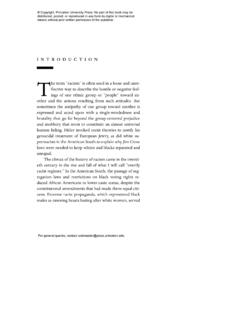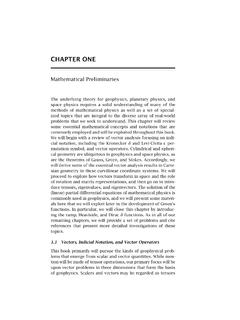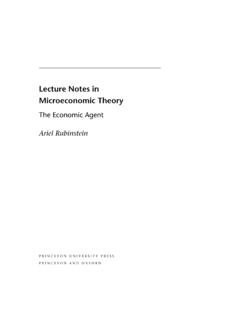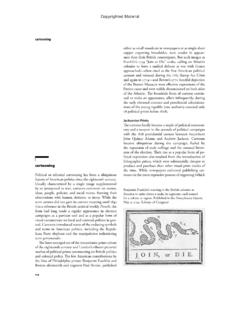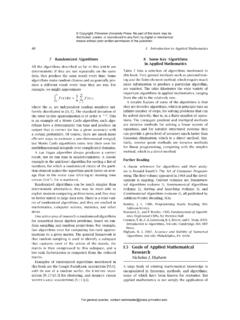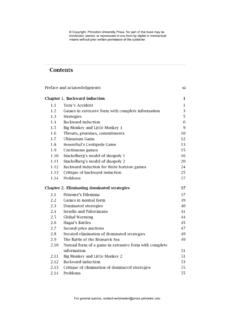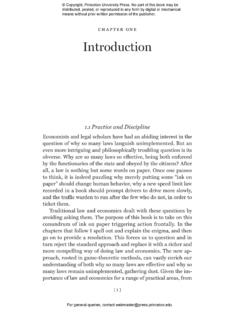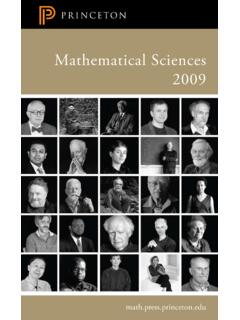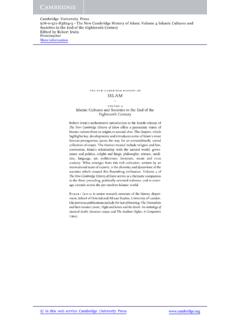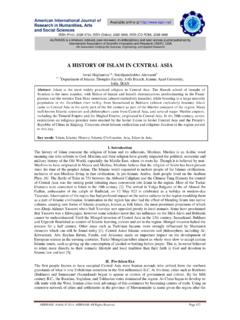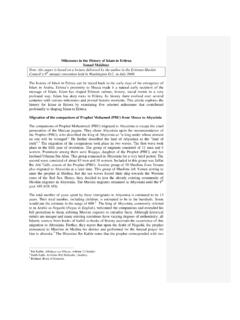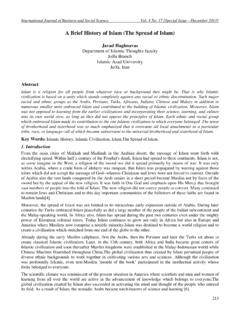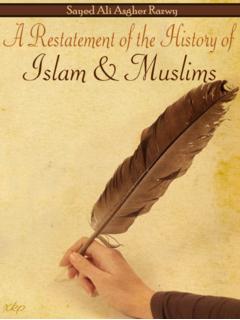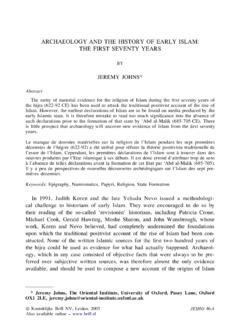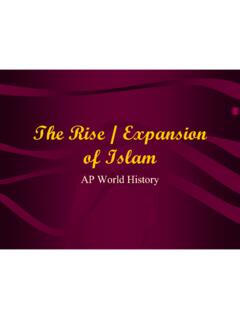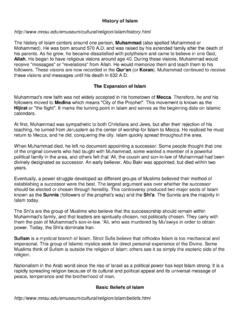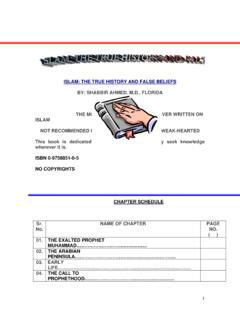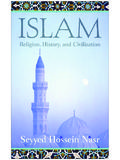Transcription of A Historical Overview of Islam in South Asia
1 Copyrighted Material INTRODUCTION A Historical Overview of Islam in South Asia Barbara D. Metcalf Sri Lanka and the Southern Coasts For long centuries, India, in a memorable phrase, was on the way to everywhere (Abu Lughod 1989). Trade brought Arabs to India s southern seacoasts and to the coasts of Sri Lanka, where small Muslim communities were established at least by the early eighth century. These traders played key economic roles and were pa tronized by non-Muslim kings like the Zamorin of Calicut (Kozhikode) who wel comed diverse merchant communities. The coastal areas had long served as nodal points for the transshipment of high value goods between China, Southeast Asia, the Middle East, and Europe, in addition to the spices, teak, and sandalwood lo cally produced.
2 The Muslim populations grew through intermarriage, conversion, and the continued influx of traders. The Portuguese, who controlled the Indian Ocean by the early sixteenth cen tury, labeled the Sri Lankan Muslim population Moro or Moors. Sri Lankan Muslims are still known by this term, whether they are by origin Arabs, locals, Southeast Asians (who came especially during the Dutch dominance from the mid-seventeenth to the end of the eighteenth century) or Tamils from South India (whose numbers increased under the British Crown Colony, 1796 1948).
3 One account of early Islam in Malabar on the southwestern coast is the Qissat Shakarwati Farmad, an anonymous Arabic manuscript whose authenticity may be disputed by contemporary historians but which continues to be popular among the Mapilla ( Moplahs ) of the region. In this account, Muslims claim descent from the Hindu king of Malabar, who was said to have personally witnessed the miracle of the Prophet Muhammad s splitting of the moon (Friedmann 1975). Similarly, Tamil-speaking Muslims of the eastern coast claim that they too repre sent a community whose members embraced Islam during the lifetime of the Prophet; mosques in the area date at least from the early eighth century.
4 Figure shows a mosque built in the local style, located in the west coast city of Calicut. Not only traders, but also rulers, scholars, and literati in the South looked more 2 Copyrighted Material INTRODUCTION Fig. : Nakhuda Mithqal Masjid (Mithqalpalli) at Calicut (Kozhikode). Fourteenth century, rebuilt in 1578/79, with subsequent additions. Photo: Sebastian Prange. toward their Indian Ocean connections than toward those of Central Asia that dominated the north. They used Arabic over Persian and the Shafi i jurispruden tial tradition rather than the Hanafi law of Central Asia.
5 The cosmopolitan world of Arabic-speaking traders on the western coast in the twelfth century is vividly evoked in the story of an Arabic-speaking North African trader of Jewish origin that is retold in Amitav Ghosh s In an Antique Land (1992), a story pieced together from fragments of letters and other papers preserved in a Cairo synagogue. Among the Sufis, whose influence was also widespread in the South , was Shahul Hamid Nagori (1504 1570), popularly known as Qadir Wali because of his power to protect seafarers and others who sought his aid. His vast shrine on the coast South of Madras, shown in Figure , draws not only local pilgrims but also others from Malaysia, Sri Lanka, and beyond, where Tamil Muslims have carried his tradition.
6 The ritual at this shrine is of a pattern with that performed at nearby Hindu and Catholic sites (Narayanan 2004). Two entries in this volume depict the world of these coastal Muslims. A selec tion from a sixteenth-century Arabic tract from the western coast demonstrates the deep interrelationships that existed locally, even among transnational traders, in the face of Portuguese aggression (Chapter 30). A pedagogic Tamil text, also orig 3 Copyrighted Material INTRODUCTION Fig. : The Nagore Dargah; in front, a display of silver offerings representing body parts, vehicles, and other concerns for which the saint s intercession is sought.
7 Nagapatnam, Tamilnadu, January 2007. Smaller replicas of this shrine have been built by Tamil devotees in Singapore and Penang. Photo: Barbara D. Metcalf. inally from the sixteenth century, exemplifies the way that Tamil-language Muslim texts typically utilize the larger traditions of Tamil literature in their vocabulary, tropes, and descriptions of the local terrain (Chapter 14). The distinctive cultures of the South , shaped in large measure by their oceanic connections, are a reminder that Historical cultural and political regions do not map onto the areas defined by today s nation states.
8 Kingdoms in the northwest for cen turies spread over what are now international borders. The coastal areas of the South often had far closer connections via ocean routes than they did with many parts of inland India. This point is particularly important because of the routine description of those originating west of contemporary Pakistan, or even of all Mus lims, as foreigners on the Indian Subcontinent. This anachronistic perspective reads into the past modern geopolitical loyalties (Asher and Talbot 2006, 5 7). The Northwest in the Seventh to Twelfth Centuries By the mid-seventh century Muslim armies had reached the Hindu Kush, and by 711 an Arab dynasty had established itself in the northwest of the Indian Subcon 4 Copyrighted Material INTRODUCTION tinent, the area defined by the lower delta of the Indus River, which was then still known by its Arab name, Sindh.
9 The subcontinent as a whole was at this time still thinly populated, covered with dense forests and vast expanses of scrubland. The population included nomads, shifting cultivators, and hunters and gatherers, as well as settled farmers. There were, however, increasing numbers of local king doms as new dynastic centers were established through the more energetic use of irrigation and subsequent settled agriculture. Transportation and communication by land and sea were increasing, not least as part of ocean networks, like that of the seaborne trade that apparently stimulated the Arab campaign in Sindh.
10 Although the ruler of Sindh in the early eighth century was a Brahmin, there were also Buddhists and Jains in the area, as well as people following a range of local cults not linked to any larger tradition. Contrary to the widespread assump tion that South Asian Muslims are largely Hindu converts, this more complex situation was probably characteristic of those areas, like Sindh, where over the centuries the majority of the population would come to identify itself as Muslim. Muslims, as noted in the Preface, added one more strand to an already heteroge neous population.
